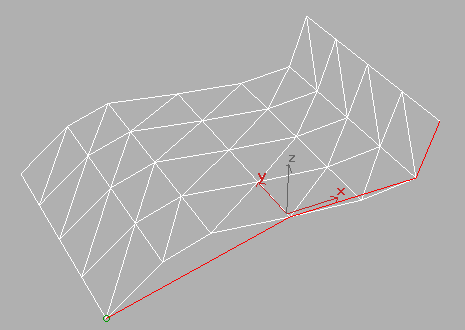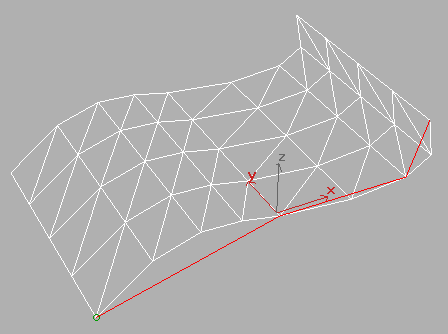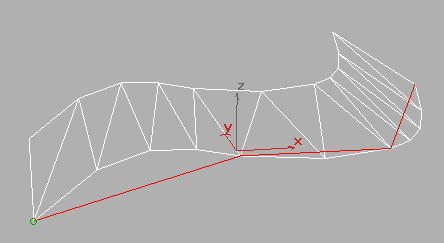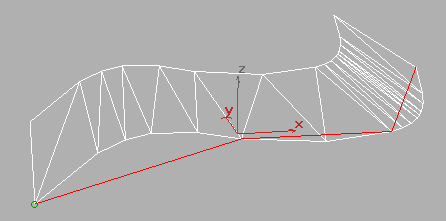3D Animation Workshop: Lesson 66: From MAX NURBS to Polygons | 2
|
|
Lesson 66 - From MAX NURBS to Polygons - Part 3
The Regular and Parametric methods provide a lot of control over the exact number of polygons, but they don't tessellate the surface with maximum efficiency. As we saw with the curve examples in Part 1, the most efficient methods are adaptive. These are methods are designed to create a finer mesh as the curvature gets tighter.
MAX (like Mental Ray in Softimage) offers two adaptive methods, Spatial and Curvature, and believe it or not, they are quite easy to understand. The Spatial method is based on the length of edges in the tessellated mesh. You set the maximum length of an edge. The segments are then subdivided into the minimum number steps that will produce a mesh with edges no longer than this length. Take a look at the following image.

With the maximum edge length set, the first segment is divided into 3 steps, the second into 2 steps, and the last segment into only a single step. Compare what happens when the edge length maximum is decreased a bit.

The single row of polygons in the rightmost segment is too wide to pass the test, so it's divided into two steps. The same is true for the last row of polygons in the first segment. Make sure you see exactly what happened here. The shorter the maximum edge length, the finer the tessellation must be.
The Curvature method uses two values. One is the angle between adjacent edges on the mesh. Once again, this is a maximum. The angle between edges cannot be greater than the amount you set. The mesh is tessellated as fine as necessary to get the result. The subdivision is within curve segments (between knots). Here is an example that permits angles as large as 30 degrees. I rotated the model around to see the angles better.

Note the sharper angularity in turning a sharp curve. This creates the adaptive result, with more subdivision through the tight part of the curvature. If the maximum angle is reduced to 5 degrees, the curved regions will subdivided further to pass the test. More (shorter) edges result in less angularity in the mesh.

The other factor in the Curvature method is the maximum distance that the approximated surface can vary from the ideal one. Once again, reducing the maximum "error" distance forces the mesh to tessellate finer to more closely approximate the mesh.
If you've followed all this, you've learned a great deal that separates the professional from the amateur NURBS modeler and MAX practitioner.
| To Return to Parts 1 and 2, Use Arrow Buttons |
|
Created: May 12, 1999
Revised: May 12, 1999
URL: https://webreference.com/3d/lesson66/part3.html


 Find a programming school near you
Find a programming school near you